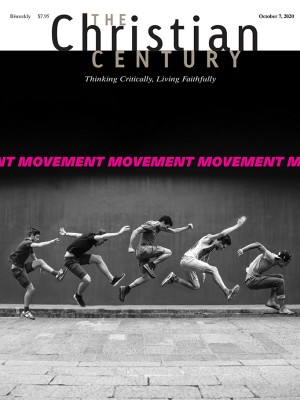October 25, 30A (Matthew 22:34-46)
Jesus teaches us to always aim for the center. And repeat.
In 1993 Anders Ericsson, a cognitive psychologist, published a paper that examined distinctions among piano students of differing abilities, including those who performed at elite levels and those who were merely average. Among his findings were results suggesting that the key difference between a musician capable of performing at Carnegie Hall and one who just plays locally is the quality and quantity of practice. Perhaps your piano teacher was right: practice makes perfect.
Since then, Ericsson’s results have been both challenged and fine-tuned, as scientists have taken a closer look at elements of performance in music, athletics, language acquisition, and so on. As it turns out, things like memory, physical characteristics, the age of learning certain skills, and even how people deal with their mistakes can contribute to higher achievement. Nonetheless, repetition and careful practice remain critical elements.
Read our latest issue or browse back issues.
As Matthew’s Gospel tells it, nearly everybody with any authority around Jesus seems to be practicing their skills at challenging him. Chief priests, elders, scribes, lawyers, Sadducees, Pharisees, and others have formed a coalition party to oppose him, despite their disagreements with each other about some matters and their probable agreement with Jesus about others.
Herodians have already launched a trick question at Jesus, pretending to pit politics against religion (“Is it lawful to pay taxes to the emperor?”). When their attempt falls short, Pharisees gather around Jesus to assess his faith commitments and knowledge of the scriptures. Among them is a lawyer, one of their most well-practiced theologians, who tests Jesus with a question: “Teacher, which commandment in the law is the greatest?”
The lawyer and Jesus likely would have agreed that the law is a gift from God, a way to show the world that God and God’s people belong to one another. The Pharisees, for their part, were deeply committed to keeping Torah’s commandments in daily life apart from the temple. On this matter they were not alone. Jesus, too, was concerned about being faithful to God’s commands, even announcing during that most famous Sermon on the Mount that he had come not to abolish the law and the prophets but to fulfill them. Indeed, he added on that occasion, unless your righteousness exceeds that of the scribes and Pharisees, you will never enter the kingdom of heaven.
The lawyer’s question is worth pondering. If we want to practice our faith or put faith into practice, where to begin? If we want daily life to reflect our relationship with God and show gratitude for that relationship, which of the commandments of God is most important? With so many from which to choose, how do we land on the most essential thing, the command that rests at the heart of them all?
A couple of months ago I stumbled upon a clue, illustrated by a short video about archery. It begins with a young man gently tossing a six-inch wooden disk into the air above his head. Seconds later an arrow speeds its way into the face of the disk, fracturing the wood into pieces that scatter on the ground beside the man’s feet. A high-speed camera, replayed in slow motion, captures the arrow’s impact nearly dead center in the disk.
The next target is a two-and-a-half-inch plastic ball. Again, the young man tosses it into the air. Again, the arrow launches toward its target and hits it nearly on center. Whether viewed in real time or in slow motion, the evidence is clear.
The archer’s arrow flies three more times, each time into an ever smaller target: a golf ball, then a Life Saver candy, and finally an aspirin tablet. In each case the arrow goes straight to the mark, even when the target is no larger than the diameter of the arrow itself.
When the show’s host asks how it is possible to shoot an arrow so accurately using a handmade bow, especially when the target seems so small, the archer replies: “The center of an aspirin is exactly the same size as the center of a beach ball. Always aim for the center.”
When Jesus responds to the lawyer’s question, he does exactly that: he aims for the center, straight into the heart of their shared sacred scriptures. His answer lands in Deuteronomy, at the Shema, God’s purpose statement for God’s people: “You shall love the Lord your God with all your heart and with all your soul, and with all your mind.” “And,” Jesus adds, quoting from Leviticus this time (in case his listeners need clarification on his first answer), “love your neighbor as yourself.”
There it is, the center of the target, recalled from the Old Testament and proclaimed anew by God’s own Messiah.
Exactly what love looks like in a given context may differ, but the calling remains the same. In Matthew Jesus tends to the needs of whoever is most vulnerable, making visible the invisible and moving the marginalized directly to the center. Whether he encounters them in houses or in public squares, in the backwoods or the temple precincts, on the road or in villages, desperate for safety or for healing, Jesus meets them where they are and brings the healing power of God. His ministry embodies the love of God.
Do you want to know how to love God with your whole self? Practice loving your neighbor. Do you want to know how to love your neighbor? Practice loving God. Repeat. Then do it again.






